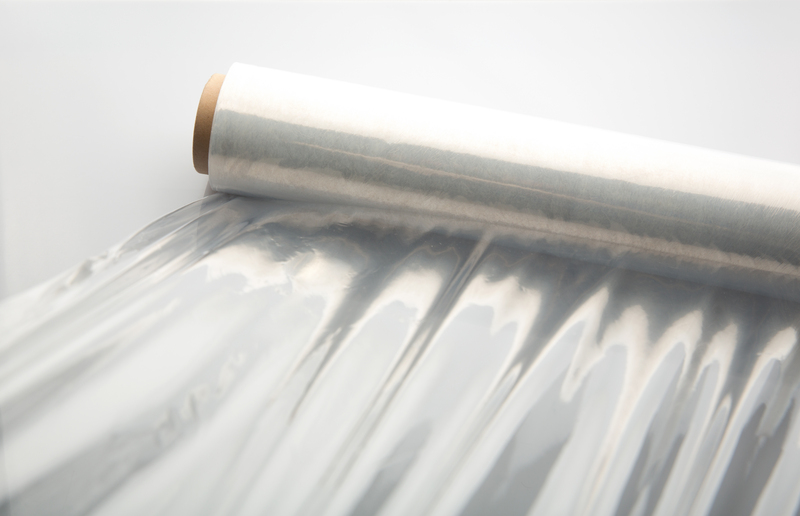Step-by-Step Guide to Cleaning Window Sill Mould
Posted on 19/09/2025
Step-by-Step Guide to Cleaning Window Sill Mould
Window sills are highly susceptible to mould because of their exposure to condensation, changing temperatures, and moisture from the outside environment. Left unchecked, mould can cause structural damage and pose health risks through the release of spores. If you're wondering how to deal with this persistent problem, our comprehensive step-by-step guide to cleaning window sill mould is here to help you maintain a healthier and more aesthetically pleasing home environment.

Why Window Sill Mould is a Problem
Mould growth on window sills is more than just an eyesore. Mould, especially black mould (Stachybotrys chartarum), can trigger allergies and respiratory issues, especially in sensitive individuals. If you regularly notice black, green, or brown patches near your windows, it's time to act quickly to curb its growth and prevent recurrence.
Common Causes of Mould on Window Sills
- Excess moisture due to condensation
- Poor ventilation
- Leaking windows or damaged seals
- Organic matter accumulating (dust, pollen, etc.)
- High indoor humidity levels
What Will You Need to Clean Window Sill Mould?
Before you begin cleaning mould from window sills, gather the necessary supplies. Using the right tools ensures effective removal and protects your health.
Essential Materials for Mould Removal
- Gloves (rubber or nitrile recommended)
- Face mask (N95 or better to avoid inhaling mould spores)
- Safety goggles
- Old clothing or protective coveralls
- Microfiber or disposable cloths/sponges
- Soft-bristled brush (for scrubbing crevices)
- Bucket with warm water
- Spray bottle
- Cleaning solution (options include diluted bleach, vinegar, or commercial mould cleaners)
- Dry towel for drying the area
Optional but Recommended:
- Plastic sheet or drop cloth
- Vacuum cleaner with HEPA filter
- Sealer or paint (for wooden window sills)
Step-by-Step Instructions for Removing Mould from Window Sills
Let's dive into our detailed mould cleaning process for window sills. Follow these steps carefully for optimal results:
1. Prepare the Area and Yourself
- Open windows for ventilation or ensure adequate airflow.
- Lay a plastic sheet or old towels under the window to catch any drips.
- Wear protective gloves, face mask, and goggles.
- Remove curtains or blinds and wash them if they've been exposed to mould.
2. Remove Loose Mould and Debris
- Vacuum any dust or mould fragments using a HEPA-filter vacuum to avoid dispersing spores into the air.
- If you don't have a vacuum, carefully wipe off loose particles using a damp microfiber cloth and dispose of it immediately.
Tip: Never use a dry brush or cloth as it may release spores into the air.
3. Prepare a Safe and Effective Cleaning Solution
- Bleach Solution: Mix 1 part household bleach with 10 parts water for severe infestations. Always test a small area first, especially on wooden or painted sills.
- White Vinegar: Use undiluted vinegar in a spray bottle for a natural, less toxic alternative. Vinegar is effective on most mould varieties.
- Commercial Mould Removers: Available in most hardware stores, ensure the product suits your window sill material (wood, PVC, aluminum, etc.).
Warning: Never mix bleach with ammonia or other cleaners, as this can create toxic fumes!
4. Apply the Cleaning Solution
- Spray the chosen solution generously over the affected sill areas. Ensure complete coverage, especially in corners and crevices.
- Let the solution sit for 10-15 minutes to break down mould spores and stains. The longer exposure helps disinfect the surface.
5. Scrub and Remove the Mould
- Using your soft-bristled brush or an old toothbrush, gently scrub the mouldy surface.
- Pay special attention to joints, cracks, and beneath window seals where mould loves to hide.
- Wipe away the loosened mould with a disposable cloth or paper towel. Dispose of these immediately after use to prevent cross-contamination.
6. Rinse and Dry
- Use a clean, damp cloth to remove any remaining residue of the cleaning solution and dead mould.
- Wipe the sill dry with a towel. Moisture left behind can encourage future mould growth, so ensure the area is completely dry.
7. Inspect and Repeat If Necessary
- If traces of mould remain, repeat steps 4 to 6. Persistent stains may need more intensive treatment or professional help.
8. Disinfect and Restore
- Apply a disinfectant (optional) for extra protection, especially if black mould was present.
- Consider applying a sealant (for wooden sills) or anti-mould paint to protect surfaces in the future.
How to Prevent Mould from Returning On Window Sills
Now your window sills are clean, take proactive steps to keep them mould-free for good. Prevention is more effective (and easier) than repeated deep cleaning!
Top Prevention Tips:
- Control Indoor Humidity: Use dehumidifiers, especially in damp climates or areas with poor airflow.
- Ventilate: Regularly open windows and/or use extractor fans to disperse humid air.
- Wipe up Condensation: Especially during chilly months, keep sills dry by regularly wiping away excess moisture.
- Repair Leaks: Check window seals and frames for gaps or damage, repairing them promptly.
- Clean Regularly: Dust and clean sills weekly to prevent the accumulation of organic material.
- Trim Back Vegetation: Outside, keep plants from brushing against your windows; they can increase moisture and shade.
Remember: Mould thrives on moisture and dirt. Keep your sills clean and dry!
Frequently Asked Questions about Window Sill Mould Cleaning
Is it safe to clean black mould on window sills yourself?
For small patches, yes--if you use proper safety gear and follow the steps above. However, if mould covers a large area (>1 square meter) or keeps coming back, it's best to contact professionals. Black mould exposure can cause health issues in sensitive individuals.
What if my window sills are wooden?
Wood is porous, so mould can penetrate beneath the surface. Use vinegar or a gentle commercial mould remover and avoid over-wetting. Allow the wood to dry completely before sealing or painting.
How often should I clean my window sills to prevent mould?
Clean at least once a week during humid seasons or whenever you notice condensation. Prevention is key--don't wait for visible mould growth.
Will regular household cleaners kill mould?
Some do, but not all. Bleach, vinegar, and specialised mould cleaners are typically more effective at killing spores and preventing regrowth than regular soap-based cleaners.
Can vinegar alone get rid of mould on window frames?
Yes, undiluted white vinegar is effective against most mould species and safe for most surfaces. It also deodorises window sills and helps to prevent further mould spore formation.
Should I paint over mould stains?
No! Never paint over active mould. Thoroughly clean, disinfect, and allow to dry fully before applying an anti-mould primer or paint designed for the job.
Common Mistakes to Avoid When Removing Window Sill Mould
- Skipping Protective Gear: Inhaling spores can cause allergic reactions or worse. Always wear gloves and a mask.
- Excessive Water Use: Over-wetting can push mould deeper into wood and worsen the issue.
- Ignoring Source of Moisture: Failing to fix leaks or ventilation problems guarantees mould's return.
- Incomplete Removal: Only scrubbing visible mould leaves spores behind. Disinfect thoroughly.
- Mixing Cleaners: Combining chemicals, especially bleach and ammonia, is dangerous.

When to Call a Professional for Window Sill Mould Remediation
Some cases are best left to experts, especially when:
- Mould covers a large area, is inside walls, or recurs persistently.
- Family members suffer from severe allergies, asthma, or immune deficiencies.
- You suspect structural damage or rot.
Mould remediation professionals have specialised equipment and antimicrobial treatments not available to the general public. They can also pinpoint and resolve the root cause of chronic moisture problems.
Conclusion: Keep Your Home Safe with Effective Window Sill Mould Cleaning
Tackling window sill mould doesn't have to be daunting. Armed with this step-by-step guide to cleaning window sill mould, you can restore your sills to pristine condition, safeguard your family's health, and enjoy a fresher home environment. Remember, consistent cleaning and moisture control are vital to stopping mould in its tracks.
Have your own tips for window sill mould removal? Share your experiences or questions in the comments--we'd love to hear your strategies for a mould-free home!





